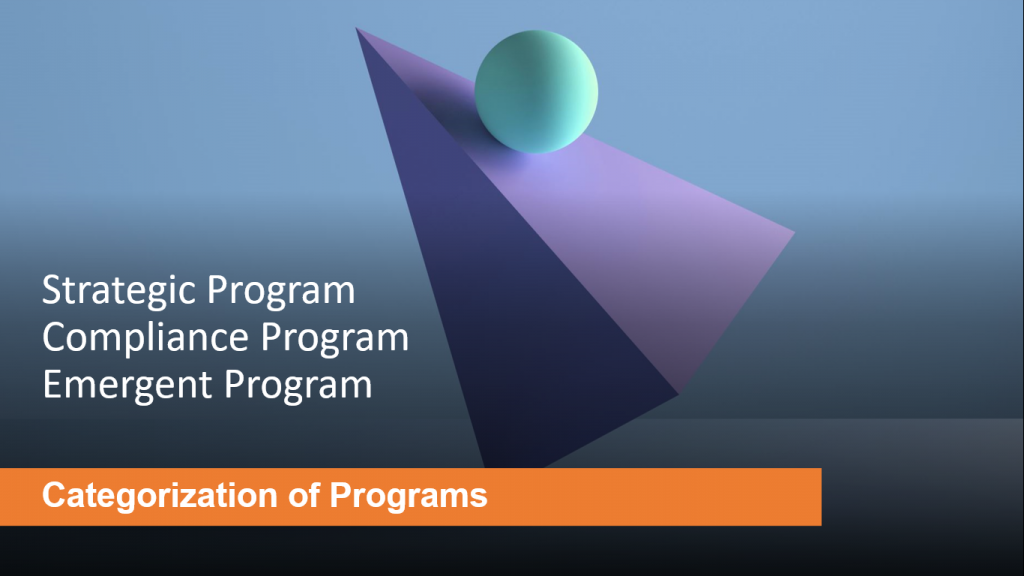In the case of a Strategic & Compliance-focused Program, component projects are identified & prioritized during the planning sub-phase after Program Business Case and Charter have been authorized. Whereas, in the case of the Emergent program, component projects are identified & prioritize even before Program Business Case and Charter are prepared & authorized. It is important to perform the initial program management activities once the emergent program has been identified.
For example, you are a software development company. You have a banking customer “XYZ”. Currently, two discrete projects are running in your organization for this customer. One project is about the development of the “Mobile Wallet” Android & IOs app. The second project is “Data Management” application development. Your organization sees synergies among these distinct project’s efforts, hence decides to manger them under the Program umbrella. The “Mobile Wallet” project will be able to maximize the benefits for the organization if the transaction data from the mobile app is effectively managed for the bank.
Who Identifies these emergent programs?
Programs are Portfolio components. They are identified and managed within the portfolio to achieve its objectives hence its Portfolio manager responsibilities to identify these emergent Programs.
How to identify the emergent Program?
The discrete projects which are identified to be managed now as part of the Program initiative maybe earlier defined & managed as Portfolio Projects components. During the portfolio performance management, we perform benefits realization analysis as part of the "Manage Value" process. During this benefits realization analysis, we may realize that these discrete projects can deliver & optimize value for the organization if they are managed as a Portfolio Program component rather than as a project component.
Compliance programs can also be launched from the portfolio management function but are seldom the result of the organization’s strategic planning process. Organizations typically have to perform compliance programs whether or not there is a tangible return on investment or strategic benefit to the organization. The benefits from such a program may be limited to compliance, avoidance of fines, and avoidance of adverse publicity.
Reference source: Standard for Program Management V3 & V4.
Thanks


Follow "Addon Skills" for our future blog, articles, and newsletters.





